Scales of the Universe in space, time, and motion
advertisement
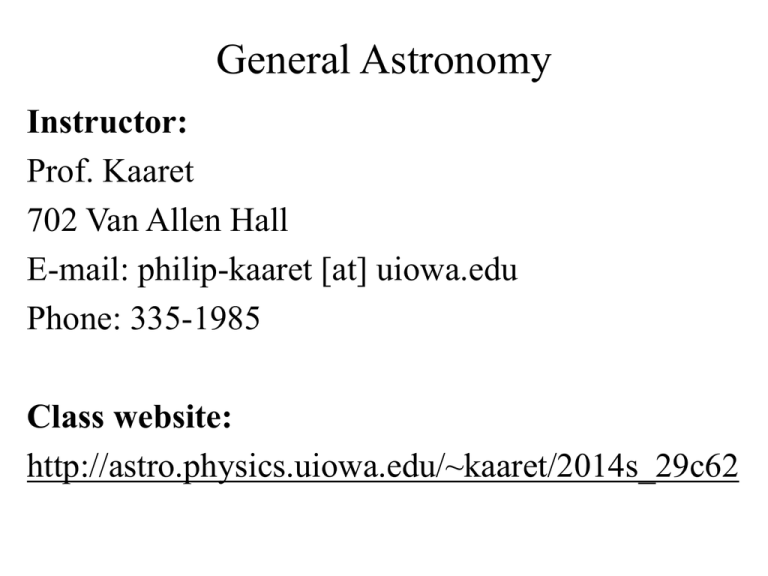
General Astronomy Instructor: Prof. Kaaret 702 Van Allen Hall E-mail: philip-kaaret [at] uiowa.edu Phone: 335-1985 Class website: http://astro.physics.uiowa.edu/~kaaret/2014s_29c62 Course topics • • • • Sun, stars Black holes, neutron stars Galaxies Cosmology Course elements • • • • • Lecture Homework In-class exams Final exam Laboratory (must pass lab to pass course) Lectures and Homework Lectures: MWF 1:30 pm – 2:20 pm, LR70 VAN Textbook: Foundations of Astrophysics, Ryden and Peterson Homework: About once per week, usually due on Mondays, do in groups of 2-3 if that helps. Help: Help is available during office hours Help: Astronomy tutorial in 310 VAN. Hours posted at http://www.physics.uiowa.edu/academics/astron_tutorial_sched.html Laboratory Lab: T 7:00 pm – 9:00 pm, 665 VAN Lab will consist of several `canned’ labs and a research project. Get started on the research project early. Grading One-hour exams (3 exams, each 100 points) 300 Final exam 200 Homework (some extra credit available) 100 Laboratory 200 Total 800 Scales in length, time, and motion • Astrophysics requires knowledge of the Universe on the entire range of length scales from sub-nuclear to cosmological. • Knowing the typical size and time scales of a system gives significant insight into that system. • Astronomical time scales can be extremely long. Sizes are in meters People Height of (small) person is about 1 m People • If the small person spins around, she can make one revolution in about 1 second. • The typical time scale for people, i.e. how fast they react to some event (how long does it take you to slam on the brakes if the car in front of you stops), is of order seconds. • The typical velocity scale for people is Velocity = length/time ~ 1 m/1 s = 1 m/s Typical walking speed is 3 mph = 1.3 m/s Earth to Moon Image taken by Galileo spacecraft Distance Earth to Moon is 3.8108 m Moon’s Orbit • The Moon makes one revolution about the Earth in one month, or about 2.4106 seconds. • A month is the time scale of the Moon’s orbit. • The velocity scale for the Moon’s orbital motion is Velocity = 2 3.8108 m/2.4106 s = 1000 m/s = 1 km/s = 2000 mph • This is comparable to the fastest Earth bound speeds A `speeding bullet’ travels at about 1000 m/s = 2000 mph. Earth to Sun Distance from Earth to Sun is 1.51011 m This is one “Astronomical Unit” = 1 A.U. Earth’s Orbit • The Earth makes one revolution about the Sun in one year, or about 3107 seconds. • A year is the time scale of the Earth’s orbit. • The velocity scale for the Earth’s orbital motion is Velocity = 2 1.51011 m/3107 s = 3104 m/s = 30 km/s = 70,000 mph • This is much faster than Earth bound speeds. A `speeding bullet’ travels at about 1000 m/s = 2000 mph. • This is faster than the orbital speed of the Moon. to Center of Milky Way Distance to Center of our galaxy is 2.61020 m or 28,000 ly Sun’s Orbit • The Sun makes one revolution about the center of the Milky Way in 230 million years, or about 71015 seconds. • This is the `time scale’ of the Sun’s orbit and a reasonable time scale for interactions of galaxies (how long does a galaxy take to react to an event like a collision with another galaxy). • The velocity scale for the Sun’s orbital motion is Velocity = 2 2.61020 m/71015 s = 2105 m/s = 200 km/s • This is an order of magnitude faster than the orbit of the Earth around the Sun. to Nearest (big) Galaxy Distance to nearest (big) galaxy is 2.41022 m or 2.6 106 ly to edge of Observable Universe Distance to edge of observable universe is 1.31026 m or 1.4 1010 ly Scale models Use scale models to gain some sense of the (relative) scales of physical objects or systems. What is a scale model? 1. made out of plastic? 2. corresponds to a real object? 3. has the same proportions as a real object? 4. has the same colors as a real object? Scale models • A scale model is a representation of a real object or set of objects in which all of the different parts of the model have sizes in the correct proportions to the real thing. • For scale factor s, real dimension D, then model dimension d = sD • For example, with a scale factor s = 1:50 = 1/50 = 0.02, an airplane with a length of D = 36 feet becomes a model with a length of d = 0.02*36 feet = 8.64 inches. Scale models • In a scale model of Earth-Moon-Sun system that could fit into this room (5 meters), how large would Earth be? • Need measurements of real system: – Distance from Earth to Sun is 1.51011 m – Diameter of Earth is 1.3107 m • Find scale factor s = 5/1.51011 = 3.310-11 • Model Earth diameter = sD = 3.310-111.3107 m = 4.310-4 m = 0.43 mm 'Cosmic Calendar' by Carl Sagan If the age of the Universe were compressed into one year, your life to date would be about 0.046 seconds, or 1/10 a blink of an eye. Review Questions • How long does it take light to travel from the Sun to the Earth? • Find Earth’s rotational speed at the equator from the Earth’s diameter and the length of a day. • If you make a scale model of the Universe that can fit into your bedroom, how large is the Earth? Is there a physical object of about that size?
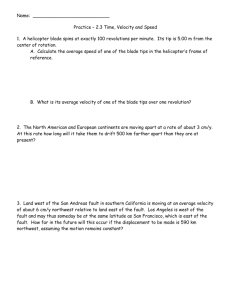
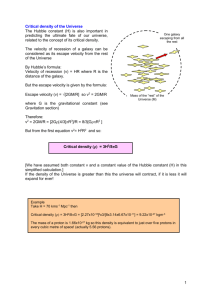
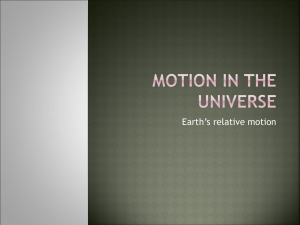






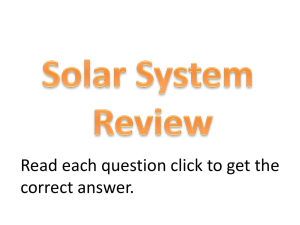
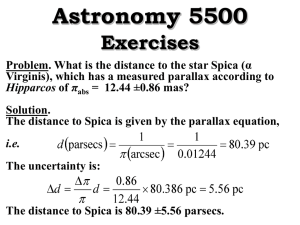
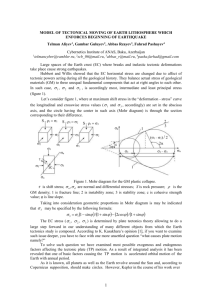
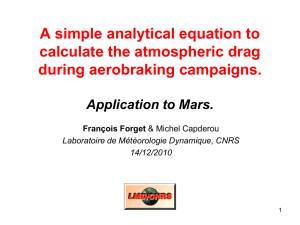
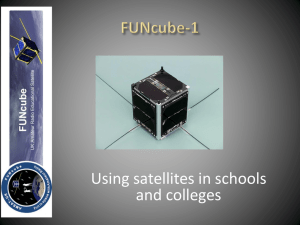


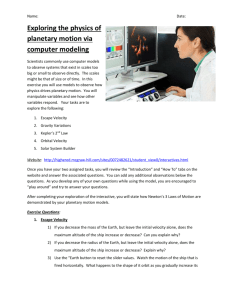
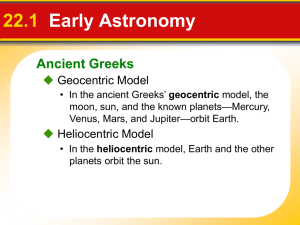
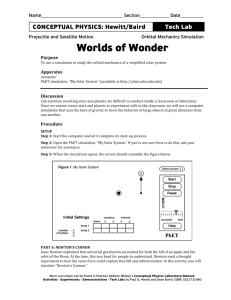
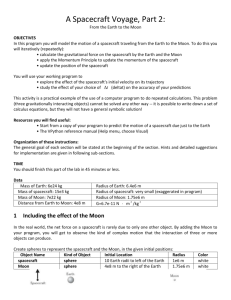
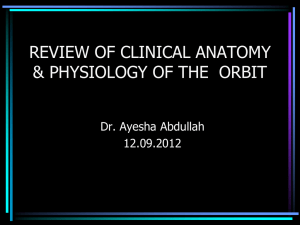
![Chpt[1]. 6](http://s2.studylib.net/store/data/005726109_1-ac289df7ccf046dee794deb7455f9c24-300x300.png)